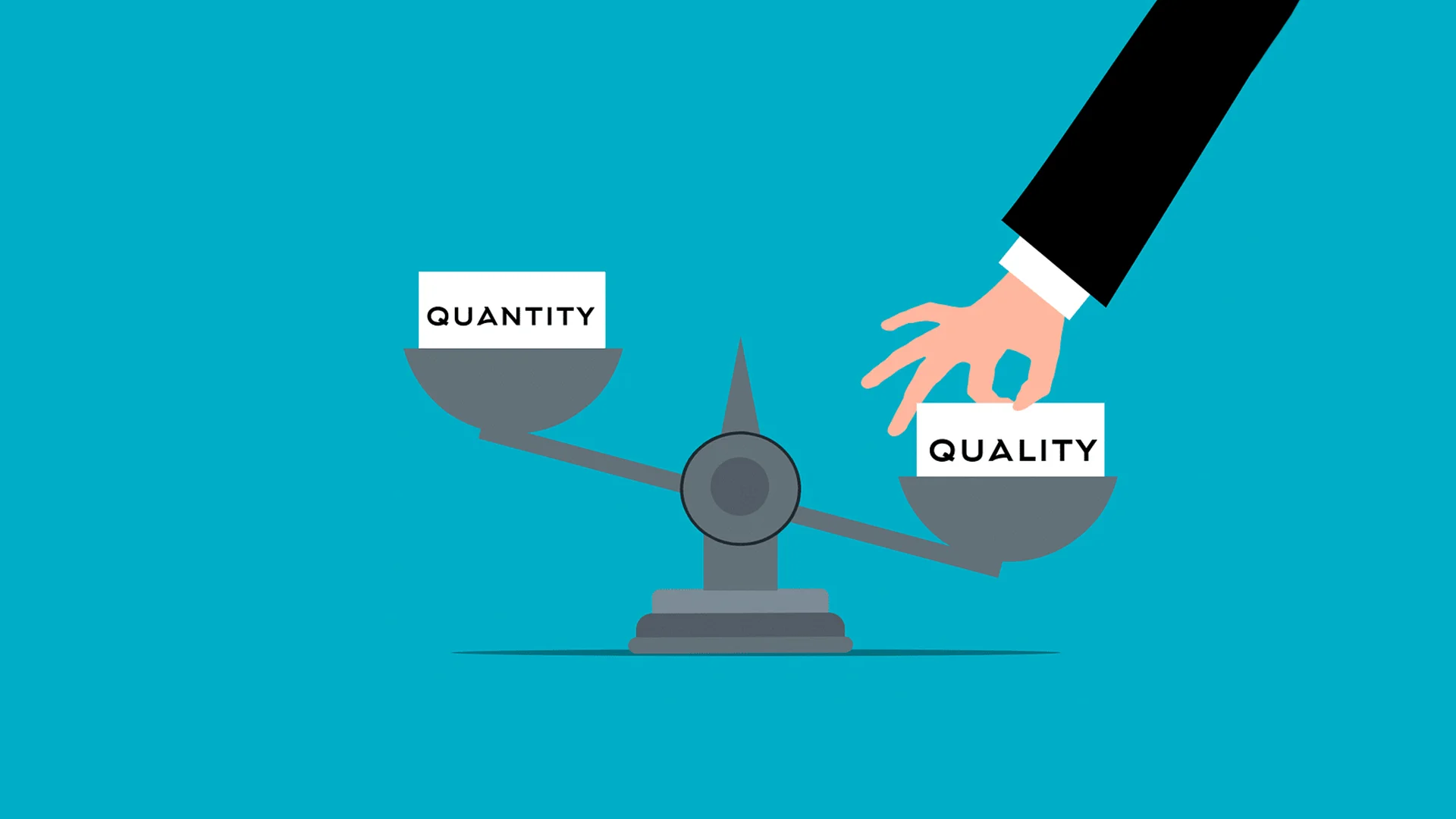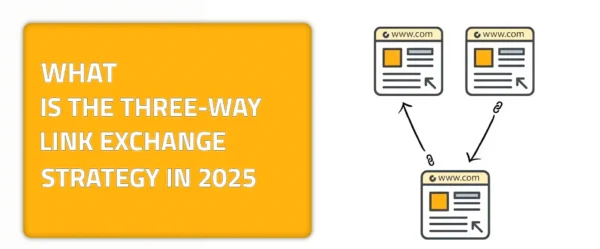The top link metrics of today’s industry act as those chefs that are behind the scenes of the kitchens that tend to prepare your ultimate favorite meals. Like seriously imagine with me that you’ve built a beautiful, user-friendly website. One that is bursting with valuable content, but your organic traffic is flatter than a bad homemade pancake. You know when Kingsley Shacklebolt asked Harry Potter what gave you away and Harry answered that it was Hedwig? Yeah, I sobbed too, but anyways, let me tell you what gives your site away and makes its traffic decrease greatly. The answer here often lies in your link profile, or may I say lack thereof.
In 2025, when search engine algorithms are smarter than ever, link metrics are like the secret decoder ring that tells Google that your site is one that is actually worth paying attention to. But the question will always remain, why are these metrics considered so important and vital? It all goes down to trust and authority. Search engines don’t take at face value. It simply doesn’t pass by them as “convincing.” As a matter of fact, they need proof that your website is one that is credible, relevant, and worth ranking above your competitors.
But where does that proof come from and where can you get it? Well, you can get it from what we like to call links. Specifically high-quality and strategically placed links that signal your website is part of a well-connected web of reliable information. Without these links that act as your proof, even the best content may pass by Google without being noticed or worse by being degraded of a good rank and obscured. With that being said, what makes top link metrics so powerful? Well, they help you measure the strength of your backlinks greatly. Additionally, they help you understand their impact on your SEO and fine-tune your strategy to get ahead of the competition. Want to know more and dive deeper into this? Let’s go and embark this journey together.
Domain Authority (DA) and Domain Rating (DR): The Foundations of Link Strength

Domain Authority (DA) and Domain Rating (DR) are the heavyweights of some of the top link metrics. That is because they act as a shorthand for a website’s overall credibility. Our amazing and only Moz and Ahrefs developed these two metrics. Why? In order to help site owners score websites on a scale of 0 to 100. The higher the score, the more likely your site will rank well in search engine results. Think of them as your SEO report card—they tell you (and search engines) how authoritative your domain is compared to others. It’s useful, efficient, and important to use in order to understand where you stand.
But here’s the catch: a high DA or DR doesn’t guarantee SEO success. Crazy! I know. A lot of people mistake the fact that it isn’t conditional that a high DA will help you succeed. Let me walk you through an example to make things easier to understand. Imagine with me a website with a DA of 85. Done imagining? Well, it might still struggle to rank if it’s not optimizing for relevant keywords or producing quality content. On the other hand, a site with a DA of 30 in a niche industry can dominate its market by targeting the right audience and building meaningful backlinks.
In 2025, boosting your DA and DR requires a mix of strategic link-building, high-quality content, and avoiding spammy tactics. These three steps are crucial for beginning your journey in a matter that is correct in the context of SEO optimization. For example, earning backlinks from reputable sources like Forbes or TechCrunch can give your DA a significant boost. But be patient, The Pyramids weren’t built in a day, and neither is a high DA. Key takeaway? Stay consistent and give enough space for your hard work to resound and show you how it will compensate such a great effort.
Page Authority (PA): A Page-Level Metric That Speaks Volumes
If Domain Authority is the big picture, Page Authority (PA) zooms in on the finer details. Like those little details you can see in the “unequal marriage” painting by Vasili Pukirev. Page authority offers an up-close view of how individual pages are performing. That is, in the vast landscape of search engine rankings. This metric evaluates the ranking strength of specific pages on your website, making it an invaluable tool for fine-tuning your SEO strategy. While your homepage might naturally have or display a high PA due to its central role and frequent backlinks, what about those hidden gems that are buried deep in your blog archive?
You know, those pages you poured your heart into years ago and then promptly forgot existed. Yes, these two can add value to you and help you with your top link metrics that you should use in 2025 to soar with success. As a content writer, I feel you and I have been there before. Chances are, some of those old and most hidden gems still have untapped potential waiting to be unleashed. In 2025, prioritizing PA feels a bit like dusting off an old photo album and finding a winning lottery ticket tucked between the pages.
An Example That Helps Explain and Clarify Things for You
Imagine this: your “Ultimate Guide to App Development” is sitting on a solid PA score, but its traffic is plateauing. When you build targeted backlinks and improving internal linking to this page, you could turn it into a magnet for organic traffic. On the flip side, a page with low PA but valuable content—like an in-depth case study—can be revitalized with some strategic updates, refreshed keywords, and perhaps even a well-placed guest post backlink from a trusted site in your niche.
Why does this matter? Because search engines are constantly looking for pages that are active, relevant, and well-connected within the web of information. When you focus on your site’s PA, you will be able to ensure every corner of your site. From forgotten blog posts to cornerstone content, all would be doing its part to drive traffic and boost your rankings. Think of it like a well-structured team where every player has a role, and every role contributes to the win. So, don’t let those hidden gems gather too much dust. Take them out of the drawer, polish them up, link them strategically, and let your content portfolio shine brighter than ever in today’s digital SEO era.
Top Link Metrics of 2025: Backlink Relevance: The Quality vs. Quantity Debate
It’s the age-old SEO question: What’s more important, quality or quantity? If you’ve read enough articles on our blog, I guess you’d know my take on this question. When it comes to backlinks, the answer in 2025 is as clear as the sun on a good sunny middle eastern morning. Quality wins every single time.
Imagine a scenario where you receive 1,000 backlinks from unrelated, low-quality sites. Sure, the numbers look impressive, but they’re about as useful as a chocolate teapot (if that’s a thing). Now, compare that to receiving 50 backlinks from authoritative sites that are relevant to your niche. That’s where the magic happens and that’s when you start to see a difference.
Diving Deeper Into Relevance and It’s Relation With Effective Link-Building
Relevance is the cornerstone of effective link-building. Search engines analyze the context of the linking site. This is of great importance because it shows how relevant that site is to yours. Furthermore, they focus on the content surrounding the link and its placement. That is all done to determine its value and relevance rate. For example, a tech blog linking to your software solutions page is gold to hold on to. A cooking blog doing the same? No, I don’t think so.
Here’s a quick checklist to assess backlink relevance:
- Is the linking site within the same or a related industry?
- Does the anchor text align with the linked content?
- Is the link integrated naturally into the surrounding text?
When you focus on relevance, you’re not just building links, as a matter of fact, you’re building trust with search engines and users alike. You’re creating your own credible aura that surrounds your site and helps you in getting more people to actually check your domain out.
Top Link Metrics to Understand: Anchor Text Diversity: Crafting a Natural Backlink Profile
Anchor text is one of those SEO elements that’s easy to overlook but incredibly impactful. It’s the clickable text in a hyperlink, and search engines pay close attention to it. Why? Because it gives clues about the content it links to. However, using the same anchor text repeatedly is like wearing the same outfit to every meeting you attend, it gets boring, fast.
In 2025, anchor text diversity is key to a healthy backlink profile. Too much exact-match anchor text (like “best link-building service”) can look suspicious to search engines, almost like you’re trying too hard to game the system. On the other hand, a mix of branded, generic, and partial-match anchor text creates a more natural, balanced profile. That is why it is important that you create that balance efficiently in order to succeed.
Let’s look at a few examples that could clarify things for you:
- Branded: “Visit linkexchange.ai for expert link-building strategies.”
- Generic: “Click here to learn more about link metrics.”
- Exact Match: “Top link metrics for SEO success in 2025.”
The trick is to strike the right balance. A varied anchor text strategy not only keeps search engines happy but also enhances user experience, making your links feel authentic and valuable.
Link Placement and Context: Why Location Matters
Ever heard the saying “location, location, location”? No? Okay let me explain it. This is a cliché that property experts use in order to emphasize on the important factors of determining how desirable a property is. The three important factors are obviously location, location, well, and location.
It’s not just for real estate, it’s also a golden rule for link-building. In 2025, where a link appears on a webpage can significantly impact its value, both in the eyes of search engines and the users you’re trying to attract. Think of it like seating arrangements at a wedding for example: the closer you are to the main table (the content), the more noticed and valued you are (the faster you eat at the buffet). Links embedded within the main content are like front-row seats at a concert, they tend to get all the attention and deliver maximum impact. In contrast, links relegated to the footer or sidebar are like standing-room-only tickets (ouch). They’re there, but let’s face it, nobody’s rushing to engage with them.
Why is this the case? It’s all about relevance and visibility. Search engines prioritize links that are contextually relevant and naturally integrated into the main body of content. For instance, imagine a link to your SEO services page nestled within an article titled “Top Digital Marketing Strategies for 2025.” It’s a perfect match, offering value to the reader while signaling to search engines that the link has real merit. Now, compare that to a link awkwardly crammed into a generic “resources” section. Not only does it lack contextual relevance, but it also risks being overlooked by users and undervalued by search engines.
Top Link Metrics to Know: The Full Process of Placing Links
Placement also matters because it influences how users interact with your content. A well-placed link within an engaging paragraph is far more likely to be clicked, shared, or even bookmarked, amplifying its overall impact. For example, if you’ve written an insightful blog post on “SEO Trends for 2025,” and you strategically place a link to your services within a particularly compelling section, readers are naturally drawn to explore further. Conversely, a poorly placed link can feel forced, making readers suspicious and less likely to click.
So, what’s the takeaway here? Link placement is as much about user experience as it is about SEO strategy. Whether you’re crafting internal links on your own site or earning backlinks from others, always aim for placement that feels natural, adds value, and fits seamlessly into the content. In the world of link-building, context is king, placement is queen, and together, they rule the realm of effective SEO.
To Wrap Things Up!
Understanding link metrics is no longer optional, it’s necessary in order to reach the level of SEO success that you wish for in 2025. From mastering Domain Authority and Page Authority to nailing backlink relevance, anchor text diversity, and strategic link placement, these metrics are your ticket to having a powerful link profile. Think of it as assembling the ultimate SEO toolkit, one that not only drives traffic and boosts your rankings but also leaves your competitors wondering how you got so far ahead. It’s not just about ticking boxes; it’s about playing the SEO game smarter and winning big.
Now, let’s talk about making all that hard work a little easier. Ready to take your link-building strategy from “meh” to “wow”? That’s where I would suggest you let linkexchange.ai come in to your play area. With intuitive backlinking services and expert guidance, it’s like having a personal trainer for your backlink profile. One that is helping you flex your SEO muscles in all the right ways. Whether you’re aiming for natural growth, better connections, or simply want to save yourself a ton of time, linkexchange.ai has your back. So why wait for SEO success to knock on your door when you can go out and grab it? Visit linkexchange.ai today and start building links that truly make a difference. Your future self along with your traffic stats, will thank you!










